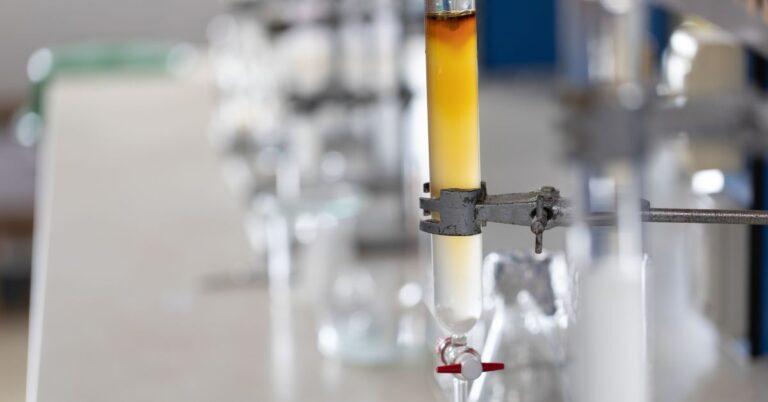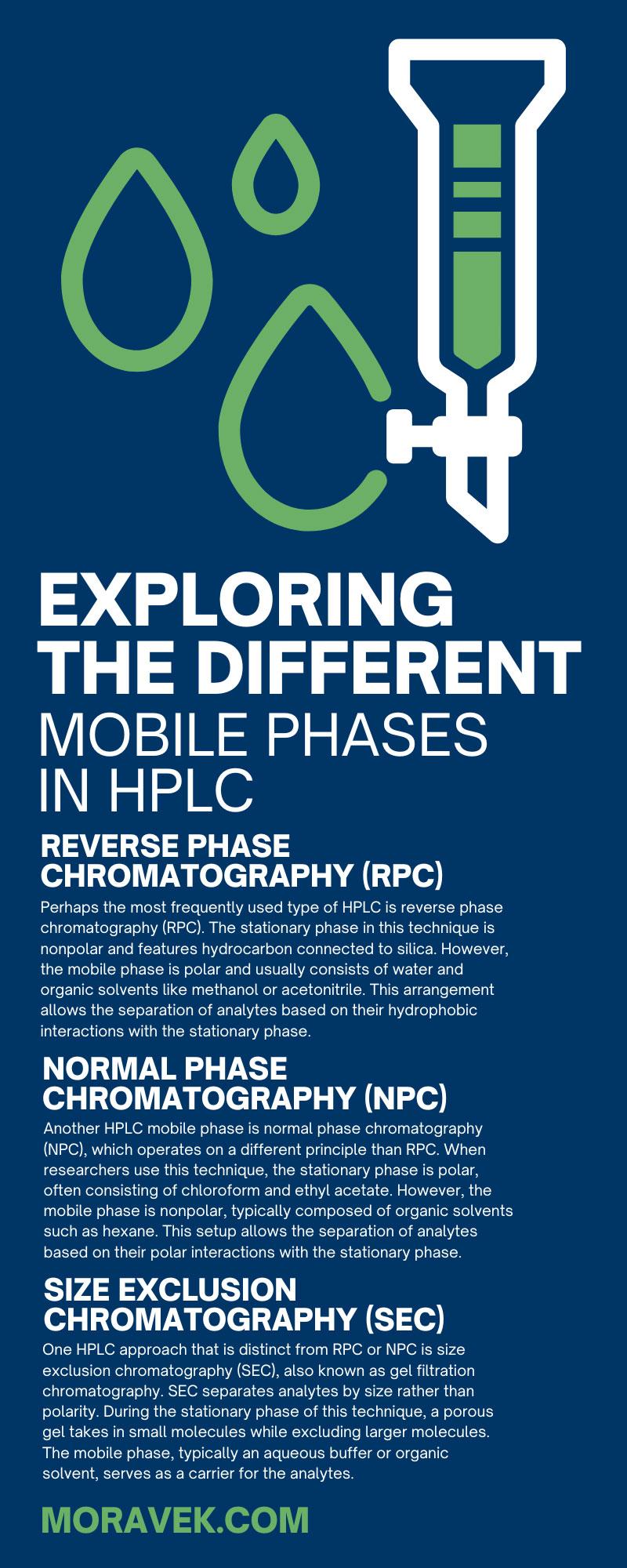
High-performance liquid chromatography (HPLC) is an important part of the drug development process. This is because it helps researchers ensure the purity and efficacy of pharmaceutical products that end up in consumers’ hands.
This technique has many components, including the mobile phase, which is the solvent that takes these compounds through the stationary phase. HPLC techniques require variations in mobile phase mixtures. This guide will explore the different mobile phases in HPLC. Read on to learn more.
Reverse Phase Chromatography (RPC)
Perhaps the most frequently used type of HPLC is reverse phase chromatography (RPC). The stationary phase in this technique is nonpolar and features hydrocarbon connected to silica. However, the mobile phase is polar and usually consists of water and organic solvents like methanol or acetonitrile. This arrangement allows the separation of analytes based on their hydrophobic interactions with the stationary phase.
The principle behind RPC is that nonpolar compounds have a stronger affinity for the hydrophobic stationary phase and, therefore, will elute more slowly than polar compounds. This technique is particularly effective for separating and analyzing compounds with varying degrees of polarity.
Researchers can apply this technique to various sample types. For example, researchers often use RPC to analyze pharmaceutical drugs, peptides, and proteins. RPC is also compatible with mass spectrometry, making it a versatile and powerful tool in pharmaceutical analysis.
One critical factor in RPC is the composition of the mobile phase. The proportion of water to organic solvent can significantly impact the separation efficiency and resolution. Additionally, the pH of the mobile phase can affect the ionization state of the analytes, further influencing their interaction with the stationary phase. Therefore, careful optimization of the mobile phase composition and pH is essential for achieving high-quality separations in RPC.
Normal Phase Chromatography (NPC)
AnotherHPLC mobile phaseis normal phase chromatography (NPC), which operates on a different principle than RPC. When researchers use this technique, the stationary phase is polar, often consisting of chloroform and ethyl acetate. However, the mobile phase is nonpolar, typically composed of organic solvents such as hexane. This setup allows the separation of analytes based on their polar interactions with the stationary phase.
Polar compounds will have a stronger affinity for the polar stationary phase and elute more slowly, while nonpolar compounds will elute faster. NPC is particularly useful for compounds that are difficult to separate using RPC, such as isomers, lipids, and certain carbohydrates.
The choice of mobile phase in NPC can significantly impact the separation process. The polarity of the organic solvents can influence the retention time and resolution of the analytes.
Size Exclusion Chromatography (SEC)
One HPLC approach that is distinct from RPC or NPC is size exclusion chromatography (SEC), also known as gel filtration chromatography. SEC separates analytes by size rather than polarity. During the stationary phase of this technique, a porous gel takes in small molecules while excluding larger molecules. The mobile phase, typically an aqueous buffer or organic solvent, serves as a carrier for the analytes.
Larger molecules will elute faster as they are excluded from the pores and travel through the column more quickly, while smaller molecules will elute more slowly as they enter and exit the pores. SEC is particularly useful for separating and analyzing biomolecules such as proteins, nucleic acids, and polysaccharides. Its ability to separate molecules based on size makes it invaluable to pharmaceutical researchers when analyzing complex mixtures and purifying biopharmaceuticals.
Ion Exchange Chromatography (IEC)
One last HPLC technique is ion exchange chromatography (IEC), which separates analytes based on their charge and the interactions with the charged stationary phase. The stationary phase consists of resin particles with charged functional groups, while the mobile phase is typically an aqueous buffer with varying ionic strength and pH.
Researchers find IEC particularly useful for separating and purifying charged biomolecules, including proteins, peptides, and amino acids. Its ability to handle complex mixtures and its compatibility with various detection methods make it a versatile technique in pharmaceutical analysis. The choice of mobile phase in IEC is crucial for achieving high-resolution separations.
Tips to Follow for the Mobile Phase of HPLC
Researchers must carefully consider and manage the mobile phase to achieve optimal results in the HPLC process. Below are some essential tips for creating your solvent.
Ensure Your Solvents Are the Same Temperature
Temperature variations between solvents can affect the viscosity, density, and flow rate of the mobile phase, leading to inconsistent retention times and peak shapes. Therefore, it is essential to ensure that all solvents in the mobile phase are at the same temperature before mixing. Pre-equilibrating the solvents at room temperature can help maintain the consistency and reproducibility of the separation process.
Use High-Purity Solvents
If you use impure or low-quality solvents in the mobile phase, you may undermine the reliability of your HPLC research. Impurities in solvents can cause baseline noise, ghost peaks, and contamination of the column, leading to inaccurate results and reduced column life.
Therefore, you must use high-purity solvents, such as HPLC-grade solvents, in the mobile phase. Additionally, filtering the solvents through a 0.45 µm or 0.22 µm filter can help remove particulate matter and prevent the column from clogging.
Always Use a Buffer
Researchers should not overlook the importance of a buffer when trying to maintain the pH stability of the mobile phase. This can influence the ionization state and retention behavior of the analytes. Using a buffer with an appropriate pH range can help achieve consistent and reproducible separations.
Researchers commonly use phosphate and acetate buffers in HPLC. It is essential to choose a buffer that is compatible with the analytes and the stationary phase. Additionally, degassing buffer solutions can improve performance.
Now that you understand the different mobile phases in HPLC, you can better achieve optimal separations in your pharmaceutical research. You can also improve your drug development by utilizing HPLC analysis services from Moravek. Our highly skilled employees are ready to help you learn the characteristics of your compounds, including their radiochemical, chemical, or chiral purities, so contact us today.

